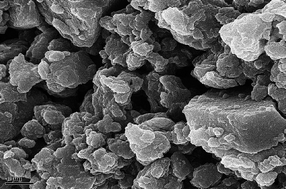The characterisation and stability of coal slurries for introduction into an inductively coupled plasma optical emission spectrometer (ICP OES) and the application of slurries in the analysis of coal was investigated. The importance of rheology and the stability of the coal slurries on the analytical results produced by ICP OES was demonstrated. The homogeneity and stability of various coal slurries were characterised by sedimentation tests, scanning electron microscopy (SEM), zeta potential and viscosity measurements. The porosities and surface areas of different South African coals and a mechanism for the adsorption of the dispersants onto the coals were determined using low-temperature nitrogen physisorption studies. The possibility of partially solubulising the coal in N,N-dimethylformamide (DMF) was investigated. SEM indicated that DMF solubulised coal fines and that 0.1% (m/v) Triton X-100 with 10% (v/v) DMF resulted in well dispersed slurries relative to other dispersants (glycerol, PEI and water). Slurry analysis of coarse and ground coal in 0.1% (m/v) Triton X-100, showed that higher emission intensities and better precision was obtained when using ground coal. This was confirmed by lower RSDs (less than 5% for most of the elements analysed) relative to the unground, coarse coal. Glycerol slurries gave higher RSDs (higher than 5% for most of the elements) most of the time, thus negatively influencing the precision of measurement. Physisorption studies indicated that ground coal had up to ten times higher surface areas than coarse coal. The higher surface areas for fine ground coals suggested why they were better dispersed and thus better transported into the plasma, resulting in higher emission signals. Zeta potentials indicated that for all dispersants, the coal particles were well repelled from each other, although SEM pictures indicated better dispersion for 0.1% (m/v) Triton X-100 with 10% (v/v) DMF. It was demonstrated that higher intensities and higher precision could be obtained with well dispersed and stable coal slurries.

You have access to this article
 Please wait while we load your content...
Something went wrong. Try again?
Please wait while we load your content...
Something went wrong. Try again?


 Please wait while we load your content...
Please wait while we load your content...